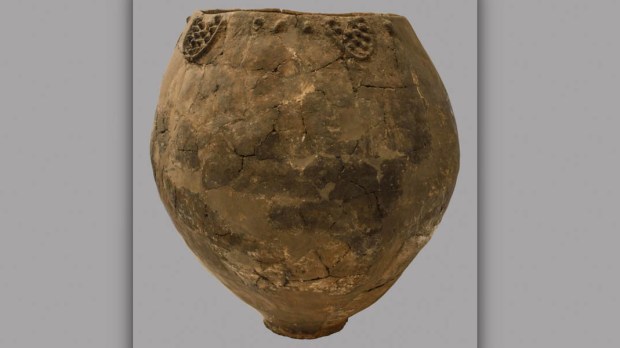Lenten Campaign 2025
This content is free of charge, as are all our articles.
Support us with a donation that is tax-deductible and enable us to continue to reach millions of readers.
Archaeologist Patrick McGovern of the University of Pennsylvania Museum of Archaeology and Anthropology published a study in the journal Proceedings of the National Academy of Sciences that suggests the origins of wine can be found in the country of Georgia. His team of archaeologists found the evidence — broken jars that were determined to have fermented the precious liquid — in the ruins of two Neolithic-era settlements.
The findings predate the record holder, Iran, by 600-1,000 years, making the Georgian sites the oldest winemakers on record. The New York Times notes that China is still the home of the oldest known alcoholic beverage, but that was most likely made from “rice, honey, hawthorn fruit and wild grapes,” whereas the residue on the Georgian pottery shows pure grape wine. Radiocarbon dating places the pottery at 6,000-5,800 years old.
The New York Times explains how Dr. McGovern led his team to this discovery:
To uncork the mystery of the oldest wine, Dr. McGovern and his team searched the remains of two villages from the Neolithic era — or the last part of the Stone Age — about 30 miles south of the capital, Tbilisi. Clay vessels found at these Neolithic sites and others in Georgia suggest the people most likely stored their wine in large, round jars as big as 300 liters, enough to hold about 400 bottles. They also probably buried them underground to ferment, which is still practiced in Georgia to this day. The team retrieved several jar shards from the sites, which they then chemically analyzed. To their surprise, eight had telltale signs of wine residue long absorbed into the pottery, including tartaric acid, which is like a flashing neon light indicating traces of grape, as well as malic, succinic and citric acids. Dr. McGovern said that to his knowledge, the combination of these four acids is found only in grape wine.

